Reading the Pictures
 Scott McCloud, a well respected expert about Comics and Graphic Novels, declares, “Pictures ARE text” and “Pictures ARE meaning” in an interview (17:45) and that they are not just illustrations in a novel of words. I already cited these words in a comment about Shannon Hale’s Real Friends in January and urged Heavy Medal readers to expand the meaning of “text” — or for Newbery manual to be updated so that images in a graphic novel would not be considered separately from the words.
Scott McCloud, a well respected expert about Comics and Graphic Novels, declares, “Pictures ARE text” and “Pictures ARE meaning” in an interview (17:45) and that they are not just illustrations in a novel of words. I already cited these words in a comment about Shannon Hale’s Real Friends in January and urged Heavy Medal readers to expand the meaning of “text” — or for Newbery manual to be updated so that images in a graphic novel would not be considered separately from the words.
As I “read” both the words and the pictures of two outstanding middle grade graphic novels, I attempted to evaluate the pictures and the panel sequences at the same time as I considered the dialogue, descriptors, plot progression, and presentation of themes and to not privilege one over the other.
ADVERTISEMENT
ADVERTISEMENT
Since both Be Prepared by Vera Brosgol and The Prince and the Dressmaker by Jen Wang were created by single author/artist, like Roller Girl and El Deafo, previous Newbery honored titles, we do not have the conundrum of attempting to figure out whether the author or the artist is responsible for certain imagery and effective choices.
 Be Prepared is a raw, sometimes heart-wrenching, but eventually triumphant memoir of a summer camp full of middle grade perils: mean girls, obnoxious boys, and feeling perpetually an outsider. There are moments of hilarity, but the tone leans darker and unpleasant – as is the apt choice of a sickly green on all the pages. The gradual realization of her situation and growth from dependent on others for validation to self-reliant and more confident would resonate with many young readers.
Be Prepared is a raw, sometimes heart-wrenching, but eventually triumphant memoir of a summer camp full of middle grade perils: mean girls, obnoxious boys, and feeling perpetually an outsider. There are moments of hilarity, but the tone leans darker and unpleasant – as is the apt choice of a sickly green on all the pages. The gradual realization of her situation and growth from dependent on others for validation to self-reliant and more confident would resonate with many young readers.
These panels below showcase Brosgol’s dexterity in capturing the mood of each scene and and her ability to convey movements and exaggerated humor.

I especially appreciate these two small panels toward the end: readers can see not only that Vera appears more assured and has a brain for a mastermind (see those eye brows, narrowed eyes, and the steepled hands), her two friends/allies are excited about her “better idea.” Note how the friends that only appear as elbow and hair but lean in further to Vera, with secretly satisfying smiles. The book is full of such detailed moments. 
Jen Wang created both an original tale and one that echoes certain artistic tropes in The Prince and the Dressmaker. One of the final scenes definitely remind me of the musical (stage & movie) Bird Cage (La Cage aux Folles) – effective and fitting — and, I imagine, unfamiliar to the target readers.
ADVERTISEMENT
ADVERTISEMENT
The tale is light and warm, with moments of revelation and tension. The relationship between Prince Sebastian and Dressmaker/Designer Frances from employer/employee to close friends to potential lovers progresses naturally, with serious bumps and dips along the way, is a delight to follow. Jen Wang conveys the narrative in fluid combination of words, pictures, and panel designs, interpreting the theme of self-expression, friendship, and familiar support effectively. Take just a couple of pages for example:
Here is a masterful set of choices of perspectives and panel resizing and nesting for dramatic effects: half of the really tall door opening without revealing who’s entering the room, the long shot of Sebastian as he slams the door, the closeup of his face first in shock and then the nested panel showing his emotional reaction just with the dropped jaw and slightly crooked mouth, paired with the words, “I need to go out in that right now.”

This is an emotionally effective, wordless page, capturing their intense first realization of the changing tenor in their relationship — is it too cliché? or simply just right? Could it be both?

What other graphic novel offerings this year you’d like to see us discuss (Hey, Kiddo by Jarrett J. Krosoczka is one of the five finalists for National Book Awards so we will most likely include it in a future post.)
Filed under: Book Discussion
About Roxanne Hsu Feldman
Roxanne Hsu Feldman is the Middle School (4th to 8th grade) Librarian at the Dalton School in New York City. She served on the 2002 and 2013 Newbery Committees. Roxanne was also a member of 2008-2009 Notable Books for Children, 2015 Best Fiction for Young Adults, and the 2017 Odyssey Award Committees. In 2016 Roxanne was one of the three judges for the Boston Globe-Horn Book Awards. You can reach her at at roxannefeldman@gmail.com.
ADVERTISEMENT
ADVERTISEMENT
SLJ Blog Network
2024 Books from Pura Belpré Winners
Passover Postings! Chris Baron, Joshua S. Levy, and Naomi Milliner Discuss On All Other Nights
Winnie-The-Pooh | Review
Parsing Religion in Public Schools
Crafting the Audacity, One Work at a Time, a guest post by author Brittany N. Williams
ADVERTISEMENT

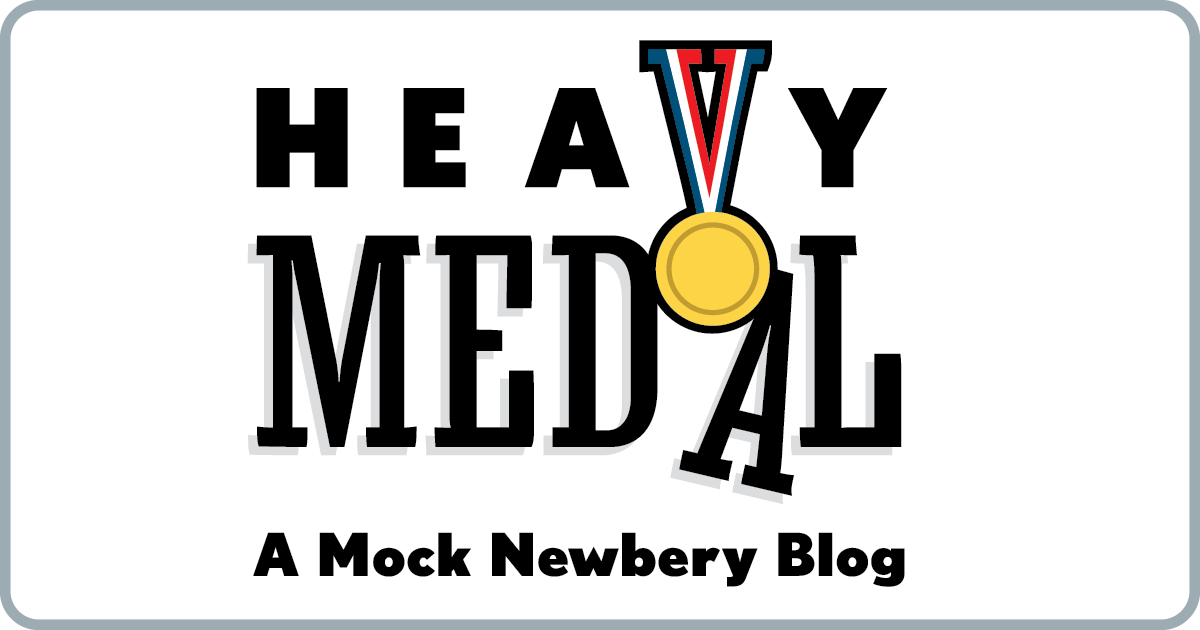

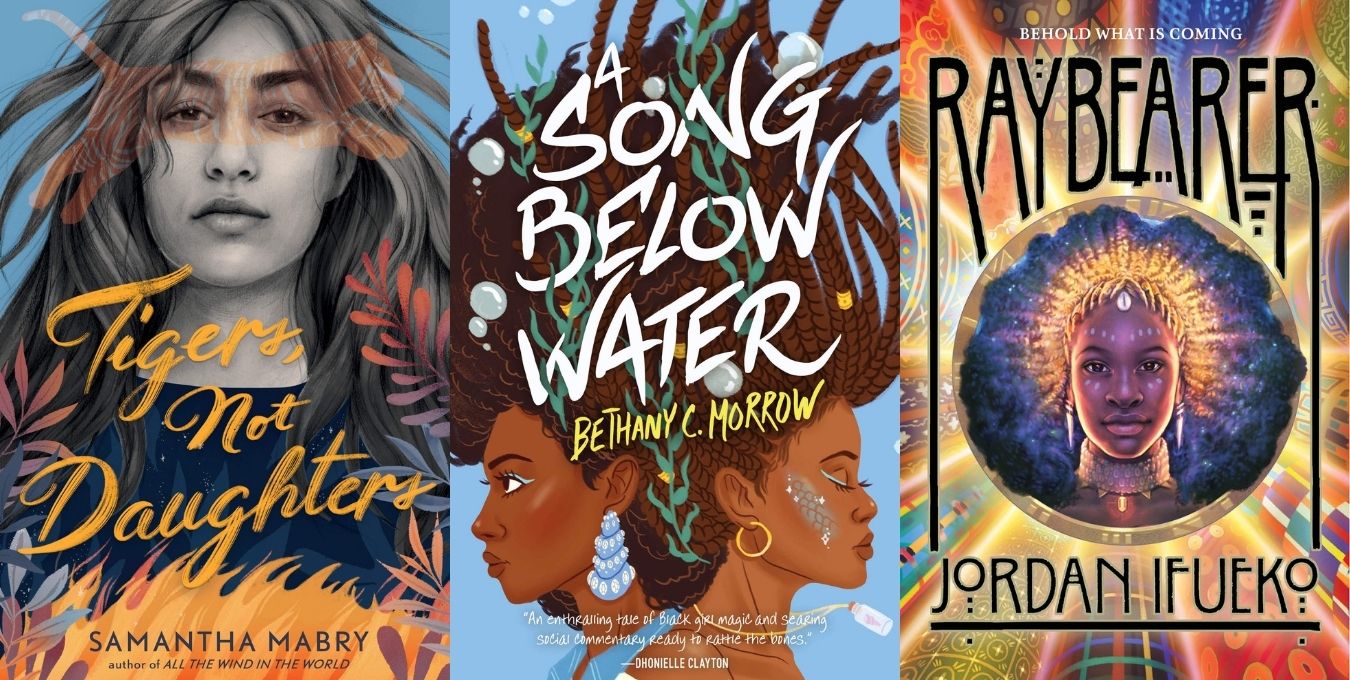
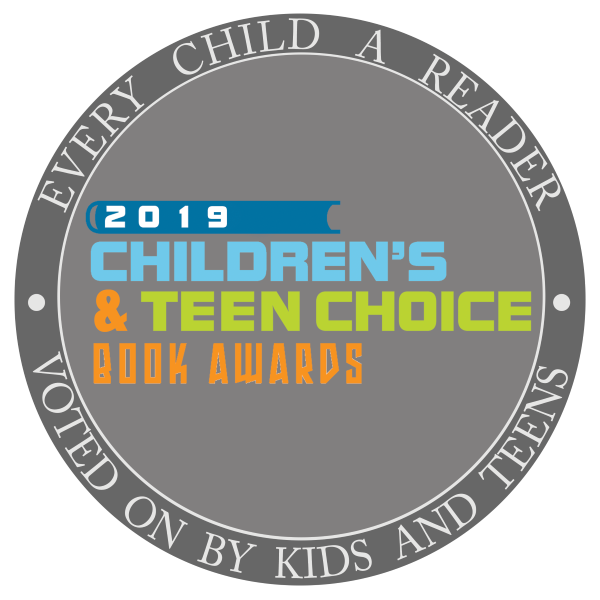

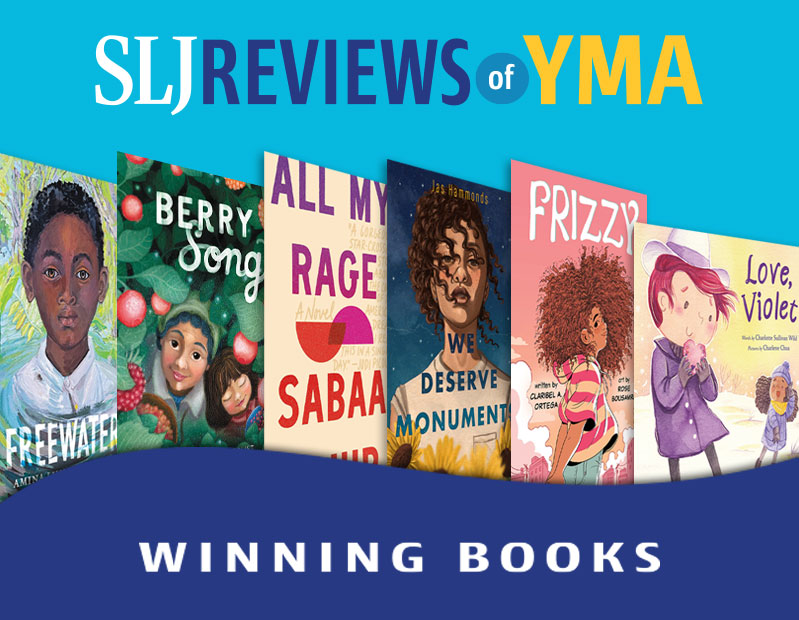
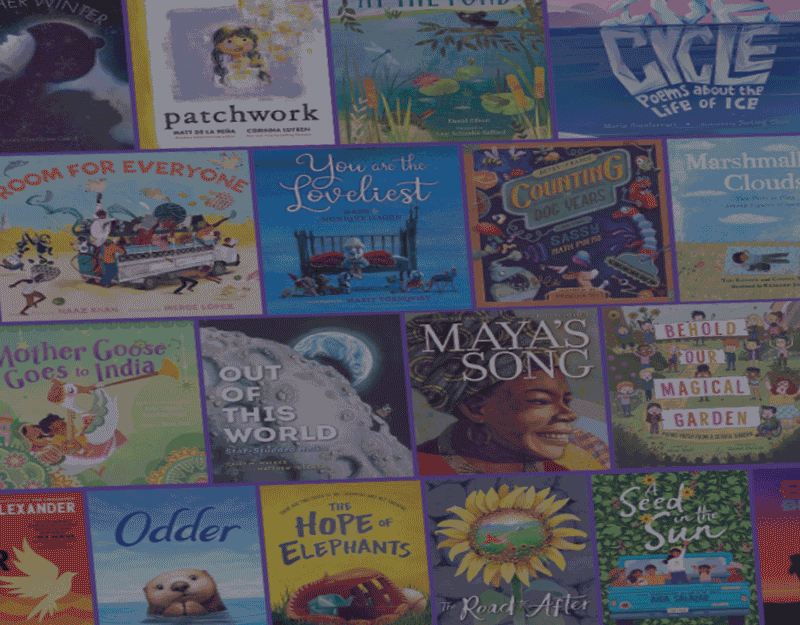
I absolutely loved THE PRINCE AND THE DRESSMAKER. The story flowed so well and the graphic novel format conveyed so much more than if it had been written as a standard chapter book. I know that it is a title that as soon as I finish I was taking it to other library staff members telling them that they needed to add it to their to read stack right now!
Although it is not necessarily a graphic novel I am curious of how THE FAITHFUL SPY will fit into the Newbery or even maybe Printz hunt. I feel that unfortunately the images in it may been seen as secondary even though they to me felt like an important part of the book.
I will hopefully get my copy of HEY KIDDO soon!
A couple others I’d put in the conversation:
PETER AND ERNESTO is a very appealing graphic novel that’s accessible to pretty young readers. Not a lot of words, though, so I will have to stretch to see it through the Newbery lens, which I have to do with most every graphic novel. When I reread it I feel like I should have “Pictures ARE text and pictures ARE meaning” on a 3 x 5 card and repeat the words aloud to myself frequently.
CARDBOARD KINGDOM is pretty amazing too. It’s actually a good reinforcement for that refrain about pictures, because while many different writers contributed separate chapters, the illustrations are all by Chad Sell, and they hold the individual pieces together, and maybe even make the whole greater than its parts.
Hi. I missed the recommendations for Newbery contenders. Can I email you? – The Unforgettable Guinevere St. Clair is a must-read consideration. Sorry, this is not a graphic novel and does not go here but I see that comments for contenders are closed… thank you!
Andrea — why don’t you put in these nominations in the November nomination time — coming up soon 🙂
Reading this analysis, I am not yet where Roxanne is as far as considering visual elements for a Newbery. Last year in the Real Friends discussion, I tried to sell a sort of “implied screenplay” approach to graphic novels, making an analogy to movies and the Oscars. I think this does allow one to look at Criteria of plot and character that may be conveyed wordlessly. Where I am still falling short are things that, by analogy to movies, might fall under cinematography, directing, editing, or even acting. And my inclination is to exclude these, even when done by the same person. Orson Welles produced, directed, starred in, and wrote Citizen Kane, which was nominated for 9 Oscars. Even though Welles served many functions, each separate award category still had to tease out elements specific to it, and in the end Citizen Kane won only the “Newbery” (i.e. best screenplay).
That said PETER & ERNESTO and CARDBOARD KINGDOM are still tops for me as far as Newbery goes. I was convinced by Jonathan Hunt’s Newbery argument for Elephant and Piggie, and PETER & ERNESTO is at heart 120 pages of Elephant and Piggie. Even so, I wouldn’t use Annable’s showstopping depiction of the Northern Lights (86) in a Newbery argument.
As usual, Leonard, I want to be inside your brain for a day. Your arguments concerning “separate categories” (Academy Awards approach) is quite fascinating. However, I think that comparing awards for movies and awards for books is like comparing a donkey to a horse: they’re both similar creatures and achieve similar tasks, but you wouldn’t mistake one for the other. If you did, we’d have donkey polo matches and donkey dressage. Or horse basketball.
Having said that, I wasn’t as into ERNESTO as you were. I thought it was sweet and more primed for the Geisel (damn that page limit rule!). BE PREPARED was only so-so to me. DRESSMAKER I loved, but it didn’t really achieve a whole lot of distinction in words. Images, yes. Words, no. I still haven’t read CARDBOARD KINGDOM.
I’m still hoping that ALA will come up with a graphic novel award. It’s about time!
I would love to see excellent graphic novels awarded but I would also hate for it to be like the Oscar for cartoons where even excellent movies like Coco can’t get a nomination in the “regular” category. I’d love for them to be integrated and not sidelined.
It’d be interesting if instead of a graphic novel award, we had a “whole package” book award. Our two big awards are the Newbery, for text, and the Caldecott, for art. There are more and more books being published where there is an interaction of text and art (as in graphic novels) or the illustrations or text are not superb in themselves, but the whole is greater than the parts. Or sometimes I think “wow, the design of this book has really elevated it into something more” but that’s not necessarily something that’s a Newbery consideration. There’s the National Book Award or the BGHB awards, by they don’t have consistent criteria from year to year. I know it’d be difficult to write criteria that would encompass wordless picture books, middle grade novels with no illustrations at all, nonfiction, graphic novels, early readers, etc.
This summer ALA approved the creation of the Graphic Novels and Comics Round Table (it was previously an interest group). From my understanding the Round Table’s long term plans included exploring the possibility of the creation of a notable comics list and/or an annual award. I would encourage ALA members interested in these possibilities to join the Graphic Novels and Comics round table now or when you renew your membership.
http://www.ala.org/news/member-news/2018/06/graphic-novel-and-comics-member-initiative-group-becomes-round-table
I think there’s an argument to be made that illustrations can be “text” in an academic context. But the Newbery criteria specifically separates text from illustrations (“Other components of a book, such as illustrations…”). So I think the award is intended to recognize a great writer of words — not a great visual artist.
Still, I don’t think you have to ignore the illustrations and *only* look at the words. I think we should look at how well the text does its job.
I’m really just paraphrasing Nina Lindsay: “The Newbery criteria ask us to focus on the text and only pay attention to other elements if they detract, but nowhere do they tell us the text has to stand alone, or be considered separate from the graphics. If part of the text’s job is to stand back and let the pictures tell the story—that’s doing its job.”
But I get the impression that the “Pictures ARE text” advocates are arguing that visual elements in a book are not necessarily “illustrations.” In the edition of Anne of Green Gables I have, the color plates are illustrations. They illustrate the text. They are not integral — many editions don’t have them or have different ones. Even in books with classic illustrations associated with them: Alice in Wonderland, Winnie-the-Pooh, Charlotte’s Web, etc. the visual elements don’t function as text. They just “illustrate” even though they may add to the experience of the book.
But the visuals in a graphic novel (and picture books too I must say) serve a different, more text-like purpose. Here are some questions one could ask — can you remove the visual elements without losing meaning? How much is lost in an audiobook version or is an audiobook even plausible? In the end, do the visual elements serve the function of “text” or the Newbery Criteria?
Approached from this standpoint, I can almost get behind the “Pictures ARE text” movement, except I don’t think that’s what the Criteria intend. For example, Definition 6 does say, “written in English…” and Definition 1 refers to “forms of writing…” So unless one is additionally going to argue that “Pictures ARE writing (in English)”, I think for now, I’m not ready to make the full leap. I like Destinee’s and Nina’s approach to the absence of words, and I think my own approach is basically consistent with that.
I fully admit that these graphic novels are “written and published in English” so my invocation of Definition 6 is not intended to shut the door on the “Pictures ARE text” argument. One could certainly make the case that “Pictures ARE language” and Definition 6 permits appropriate use of non-English language. (Though if we go that route, the Manual clearly states the award is given for the English text…)
I am more and more convinced that since graphic novel is meant to integrate both words and pictures, we should NOT ignore what goes on inside the panels and between the panels. Either we don’t consider GN at all, or we consider GN and move toward a new way to “read” them as integrated entities. Don’t forget, the plea to consider picture books as “whole books” for Caldecott has been a perennial one as well.
But, as Mr. H points out below, it’s only the illustrator of the Caldecott-winning books who gets the award. Is that fair to the author?
If we’re going to say images are text, I think we have to consider the illustrator an author. How would you feel about the Newbery being given to author-illustrator team (e.g. Hale and Pham as the authors of REAL FRIENDS)? That would ruffle some feathers!
Or would the committee only consider GNs written and illustrated by the same person?
The last time the criteria were updated over thirty years ago, graphic novels for children did not exist as we know them today. This has become an issue that needs to be addressed. The thing I would most love to see–knowing full well this will probably never happen–is for the separation between Caldecott and Newbery to be based on form and age range rather than text vs. pictures. So one award would be an award for a true picture book and one would be for a longer text format like a chapter book or novel, including graphic novels. And both would take all elements of the “whole book” into consideration. This would have big implications, such as possibly having to honor an author/illustrator team instead of just one person. But doesn’t that make more sense when they created the book together? It would resolve so many issues. I have never fully understood separating the pictures and text when the interaction between them is so often part of what makes a book distinguished. I just feel like that is the direction we need to go in as the lines blur, more creative forms emerge, and the interplay between pictures and text becomes more important to books for all ages. I also agree with Kari that a separate award for graphic novels–while long overdue–will never truly be considered as prestigious as the big two awards and might make it harder for a deserving GN to be considered for the Newbery under the existing criteria.
So if we consider the pictures as text, how do you look at a Graphic Novel for the Caldecott vs how you look at the same book for the Newbery? I am thinking of Cardboard Kingdom this year. I would say it has a better chance for the Caldecott because of the way that the facial expressions and the body language are portrayed are so integral to the story. Many of you are saying that you look at those things for the Newbery.
I agree with Destinee, in an academic sense, in a theoretical sense, the “pictures are text” idea is an interesting conversation that I could actually agree with, especially when considering young emerging readers. But in the context of a Newbery conversation, I think the criteria actually does a good job of laying out its intentions.
– In the definitions it defines “literature” as “text” then refers to “text” as “writing.”
– The criteria defines “original work” as “text” created by a “writer.”
– It specifies that text need to be in “English.”
In one of the biggest tells, the criteria even separates the terms, “text” and “illustrations” as Destinee also pointed out. The criteria refers to them as two separate things! The criteria directs the committee to make its decision “primarily on the text,” then refers to “illustrations” in the same sentence, as another “component” of the book. Not the “text.”
Here’s the other thing… I’m going to pull in Leonard’s analogy to the Oscar’s and other awards. I think it’s significant that the Newbery is to be awarded to THE AUTHOR of said work, and not the publisher, or editor, or team of illustrators or whoever. It is awarded to the author. If you think about the Oscars, who accepts the award for the Best Picture winner? It’s usually the producer(s). It’s not the screenwriter, or the director, or lead actors. It’s the executive producer(s). If we were truly seeking out the most complete package, I think the award would be given out differently. But instead, the very first line of the terms of the Newbery Medal state:
“The Medal shall be awarded annually to the AUTHOR of the most distinguished contribution to American literature for children published by an American publisher in the United States in English during the preceding year.”
I believe that emphasis on AUTHOR is important. This is an award for writing. Writing as literature. If it wasn’t, it would be awarded differently. It wouldn’t separate terms like “text” and “illustrations.” If it wanted us to consider the illustrations as part of the text, it would say so.
Don’t get me wrong… This isn’t to say that graphic novels need to be automatically disqualified from Newbery consideration. I’ve championed a few graphic novels in years past. This year, there seems to be some legit literary buzz around HEY, KIDDO. I’m just saying in a Newbery conversation, I think it’s pretty obvious that the distinguished elements of a book should be found in the written words and shouldn’t be relied on too heavily in any sort of illustrations, especially considering that the author is the one receiving the award, not the illustrator. If too many arguments for distinguished elements rely on the impact of the illustrations, then that hurts the chances of a Newbery. In my opinion. If we lean too heavily upon the idea that “pictures are text” I’m afraid we’re interpreting the criteria how we want to and not necessarily how it was intended to be interpreted.
Totally agreeing with you even if I still would love to continue the conversation about how to READ pictures/frames/panels since that’s definitely a whole fun field on its own.